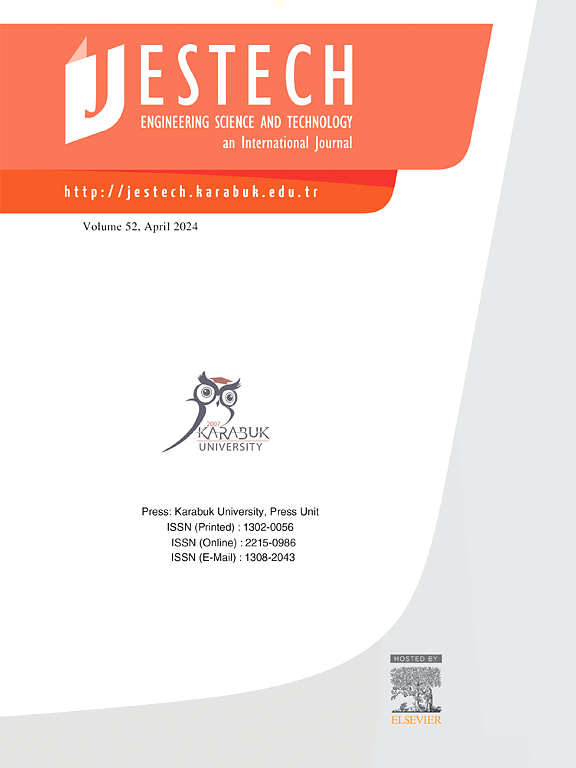Optimizing convex hull discovery: Introducing a quintuple-region algorithm with enhanced computational efficiency
IF 5.1
2区 工程技术
Q1 ENGINEERING, MULTIDISCIPLINARY
Engineering Science and Technology-An International Journal-Jestech
Pub Date : 2025-01-01
DOI:10.1016/j.jestch.2024.101918
引用次数: 0
Abstract
This paper introduces a novel algorithm for computing the convex hull of a finite set of points in two-dimensional space. Unlike traditional methods, this algorithm strategically partitions the input set into five distinct regions, isolating interior points to reduce computational efforts while determining the convex hulls of the four boundary regions. This innovative approach significantly diminishes the required number of operations, achieving a computational complexity of , where denotes the number of vertices on the convex hull and is the number of vertices. The study methodically elaborates on the development of this algorithm, starting with a comprehensive overview of convex hull related terminology and existing methodologies. Subsequent sections detail the process of identifying endpoints within the set, the division of the set into specific regions, and the application of proposed algorithms for each region to efficiently compute their convex hulls. Through theoretical analysis and case studies presented in the latter sections, this paper not only enhances understanding of convex hull computation but also demonstrates the practical efficiency and effectiveness of the proposed algorithm in various scenarios. This advancement represents a significant contribution to the field of computational geometry, offering improved solutions for problems involving two-dimensional spatial analysis.
求助全文
约1分钟内获得全文
求助全文
来源期刊

Engineering Science and Technology-An International Journal-Jestech
Materials Science-Electronic, Optical and Magnetic Materials
CiteScore
11.20
自引率
3.50%
发文量
153
审稿时长
22 days
期刊介绍:
Engineering Science and Technology, an International Journal (JESTECH) (formerly Technology), a peer-reviewed quarterly engineering journal, publishes both theoretical and experimental high quality papers of permanent interest, not previously published in journals, in the field of engineering and applied science which aims to promote the theory and practice of technology and engineering. In addition to peer-reviewed original research papers, the Editorial Board welcomes original research reports, state-of-the-art reviews and communications in the broadly defined field of engineering science and technology.
The scope of JESTECH includes a wide spectrum of subjects including:
-Electrical/Electronics and Computer Engineering (Biomedical Engineering and Instrumentation; Coding, Cryptography, and Information Protection; Communications, Networks, Mobile Computing and Distributed Systems; Compilers and Operating Systems; Computer Architecture, Parallel Processing, and Dependability; Computer Vision and Robotics; Control Theory; Electromagnetic Waves, Microwave Techniques and Antennas; Embedded Systems; Integrated Circuits, VLSI Design, Testing, and CAD; Microelectromechanical Systems; Microelectronics, and Electronic Devices and Circuits; Power, Energy and Energy Conversion Systems; Signal, Image, and Speech Processing)
-Mechanical and Civil Engineering (Automotive Technologies; Biomechanics; Construction Materials; Design and Manufacturing; Dynamics and Control; Energy Generation, Utilization, Conversion, and Storage; Fluid Mechanics and Hydraulics; Heat and Mass Transfer; Micro-Nano Sciences; Renewable and Sustainable Energy Technologies; Robotics and Mechatronics; Solid Mechanics and Structure; Thermal Sciences)
-Metallurgical and Materials Engineering (Advanced Materials Science; Biomaterials; Ceramic and Inorgnanic Materials; Electronic-Magnetic Materials; Energy and Environment; Materials Characterizastion; Metallurgy; Polymers and Nanocomposites)
 求助内容:
求助内容: 应助结果提醒方式:
应助结果提醒方式:


